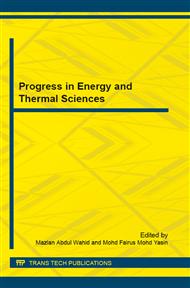p.223
p.228
p.231
p.237
p.242
p.246
p.250
p.254
p.272
Adsorptive Removal of Chromium (VI) Ions Using Cryogel Derived from Oil Palm Fronds’ Lignin
Abstract:
Nowadays, lignin is of special interest since it is the second most abundant biopolymer after cellulose. Given its extremely low cost and phenolic nature, lignin had become one of the leading candidates for preparing aerogels. However, production cost of carbon aerogels are considerably high due to extremely expensive supercritical drying method employed. Thus, carbon cryogels has been introduced by replacing the supercritical drying with freeze drying technique. In this study, lignin was extracted from dried and grinded oil palm fronds to be used as precursor for sol-gel polycondensation. Cryogel derived from oil palm fronds (OPF) was investigated as a suitable adsorbent for the removal of metal ions especially chromium (VI) through adsorption process. In addition, the adsorption amount was greatly increased when this cryogel was prepared with addition of ultrasonic effect instead of normal heating during the sol-gel polycondensation process. This new cryogel seems to be very promising for cost-effective treatment of heavy metals removal since the preparation is easy and being derived from a widely available and low-cost biomass feedstock.
Info:
Periodical:
Pages:
242-245
Citation:
Online since:
January 2016
Authors:
Keywords:
Price:
Сopyright:
© 2016 Trans Tech Publications Ltd. All Rights Reserved
Share:
Citation:


